The best resources are books, in digital format or hard-copy. With the number of BIM (Building Information Modelling) software’s to choose from, the design process for professionals has become more automated but also, efficient when designing buildings, tunnels, and bridges.
If you’re just starting out you may be wondering, “what is BIM anyway?”.
According to Autodesk, “Building Information Modeling (BIM) is an intelligent 3D model-based process that gives architecture, engineering, and construction (AEC) professionals the insight and tools to more efficiently plan, design, construct, and manage buildings and infrastructure.”
BIM software can be used to track the project life-cycle from start to finish, allow for better design choices, higher productivity, and produce better collaboration throughout the project creation. – Autodesk.
With that said, below are 12 popular Building Information Modelling books that you should have on your bookshelf to help you better understand and utilize BIM.

12 Popular BIM Books To Own
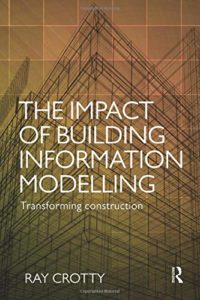 The Impact of Building Information Modelling
The Impact of Building Information Modelling
By Ray Crotty
The Impact of Building Information Modelling by Ray Crotty focuses on two specific fundamentals: the failure to deliver projects successfully on time and on budget and the failure to make a survivable level of profit. He highlights how using BIM can increase information quality in a way that aims to transform the construction industry.
This book also provides solutions to these problems using BIM, by explaining the theories and practices where BIM was implemented in the US, UK and selected European economies.
If you’re looking to improve your businesses efficiency, or is an under/post grad looking to understand BIM, this textbook would be a good read.
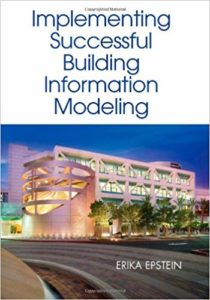 Implementing Successful Building Information Modelling
Implementing Successful Building Information Modelling
By Erika Epstein
Implementing Successful Building Information Modelling by Erika Epstein focuses on the implementation of BIM in the Architectural industry. This book talks about how BIM can be used to store data that can be used during the life-cycle of a project.
Erika Epstein provides a comprehensive explanation of key aspects of BIM that every professional should know and understand.
By Dominik Holzer
With the adoption of BIM, a Managers day-to-day deliverables have changed, which often creates misunderstandings. In this book, The BIM Manager’s Handbook, readers will get an in-depth account of what is required from a BIM Manager who is active in the delivery process of a project.
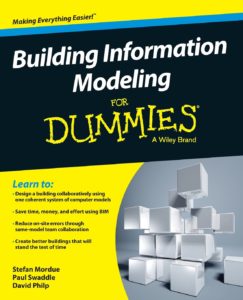 Building Information Modeling For Dummies
Building Information Modeling For Dummies
By Stefan Mordue, Paul Swaddle, David Philp
If you’re new to BIM and not sure where to start, this book would be it. Building Information Modelling For Dummies is a guide that will explain how using BIM can lead to fewer on-site errors, how the data set from BIM can be used to imitate the physical objects in the real-world, and more.
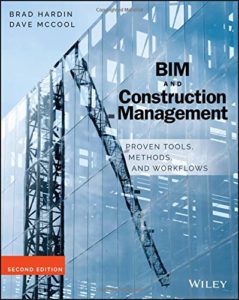 BIM and Construction Management: Proven Tools, Methods, and Workflows – Second Edition
BIM and Construction Management: Proven Tools, Methods, and Workflows – Second Edition
By Brad Hardin, Dave McCool
BIM and Construction Management is a book that offers a common-sense approach to providing value during a project’s life-cycle. This book highlights results-focused approaches that shows you how to merge BIM and other technologies into your construction management processes. It talks about this in each phase: project planning, marketing, pre-construction, construction, field work and closeout.
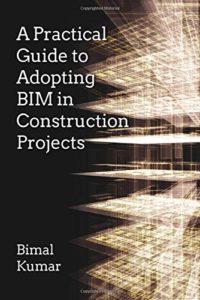 A Practical Guide to Adopting BIM in Construction Projects
A Practical Guide to Adopting BIM in Construction Projects
By Prof. Bimal Kumar
A Practical Guide to Adopting BIM in Construction Projects by Prof. Bimal Kumar is written in a way that offers a unique perspective on key issues when adopting BIM in construction projects. This book will illustrate core ideas and issues that are pulled from documents about processes, standards, and protocols that need to be in place. Prof. Bimal Kumar explains all of this in real world scenarios for practicing engineers and professionals alike.
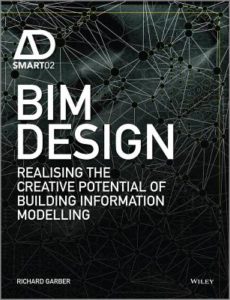 BIM Design: Realising the Creative Potential of Building Information Modelling
BIM Design: Realising the Creative Potential of Building Information Modelling
By Richard Garber
BIM Design: Realising the Creative Potential of Building Information Modelling by Richard Garber demonstrates how modern firms are using BIM technologies to eliminate common design problems during a construction project. This book illustrates the day-to-day operations of design and how it can enhance efficiency and collaboration creatively.
 Beyond Bim: Architecture Information Modelling
Beyond Bim: Architecture Information Modelling
By Danelle Briscoe
Beyond Bim: Architecture Information Modelling by Danelle Briscoe discusses the vast design potential that BIM has to offer. Danelle Briscoe illustrates this through various investigations in the analysis of built work, interviews with leading practitioners, and risky projects.
This book reveals an inventive take on modern-day practices through a catalogue of practical advantages and theories. If you’re interested in building outcomes using BIM this book is essential.
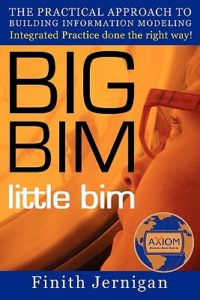 Big Bim Little Bim – Second Edition
Big Bim Little Bim – Second Edition
By Finith E Jernigan Aia
Big Bim Little Bim, the second edition is an extension of Finith Jernigan’s award-winning book on things happening in the world of BIG BIM. In the second edition, the author covers the practical applications of BIM for the construction industry overall – and talks about the phenomenon of the worldwide BIM-Storm.
If you’re a student, architect, engineer, owner, builder, manager, educator, this book will give you a practical understanding of BIM, which can be leveraged right away.
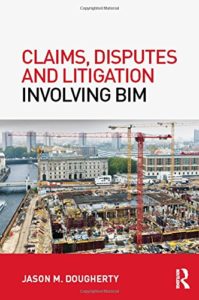 Claims, Disputes and Litigation Involving BIM
Claims, Disputes and Litigation Involving BIM
By Jason M Dougherty
If you’re unsure about the current US legal environment or what methods can be used for analyzing construction claims involving BIM, you should read this book. Author Jason Dougherty illustrates new methods for analyzing disputes and how BIM has changed the way construction drawings, surveys, and schedules are being produced and delivered.
This book is written to help contractors, cost managers, architects, building designers, quantity surveyors, and project managers become aware to the risks that they may face when implementing new technologies like BIM.
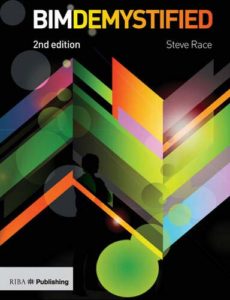 BIM Demystified – Second Edition
BIM Demystified – Second Edition
By Steve Race
Steve Race wrote the book BIM Demystified as a practical introduction to Building Information Modelling. The author addresses BIM from a mainstream practice point of view, including features, how to use BIM so users can benefit by bringing together managers and technologists within a business.
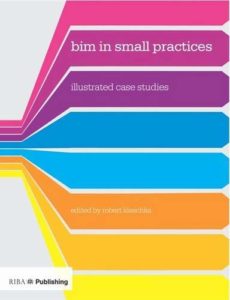 BIM in Small Practices: Illustrated Case Studies
BIM in Small Practices: Illustrated Case Studies
By Robert Klaschka
BIM in Small Practices by Robert Klaschka was written to topple the misconception that BIM is a process that should be left to large practices only. The author highlights a collection of BIM projects that were created by small architectural practices.
This BIM book is complete with practical tips, experiences, case studies from industry experts and more. If you’re interested in implementing BIM, it will show you how to get your practice started.
Building Information Modelling software is being implemented more and more to assist in construction project life-cycles. Incorporating BIM on project development is a great way to view every part of a physical project digitally that reflects the real-world through 3D imagery. It can assist in reducing project inefficiencies and increase productivity and effective/decisive collaboration.
These books can help you understand the use of BIM and how it’s positively changing the construction game.
Do you find this list helpful? Is there any that you would include?
Leave a comment below and let us know what’s on your bookshelf.

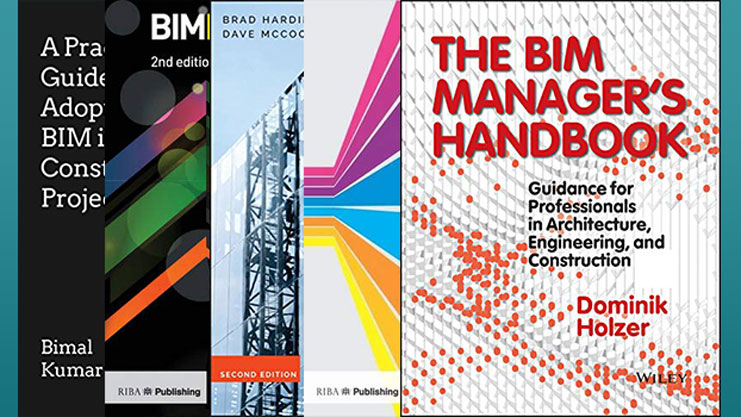
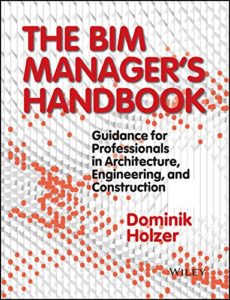 The BIM Manager’s Handbook: Guidance for Professionals in Architecture, Engineering, and Construction
The BIM Manager’s Handbook: Guidance for Professionals in Architecture, Engineering, and Construction